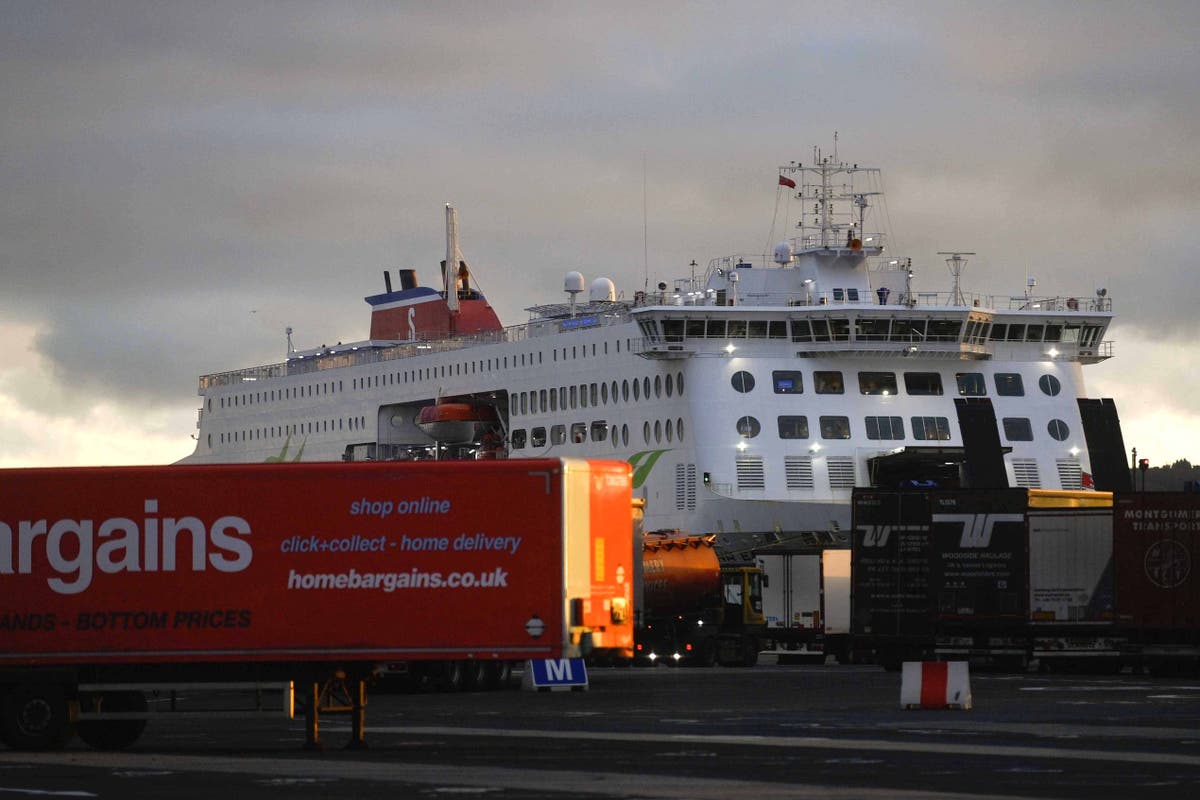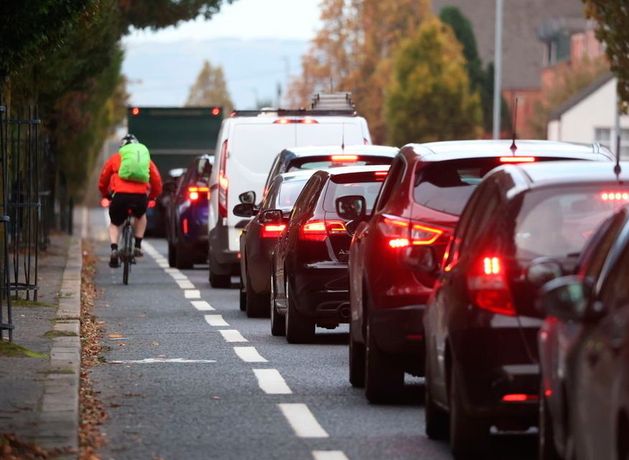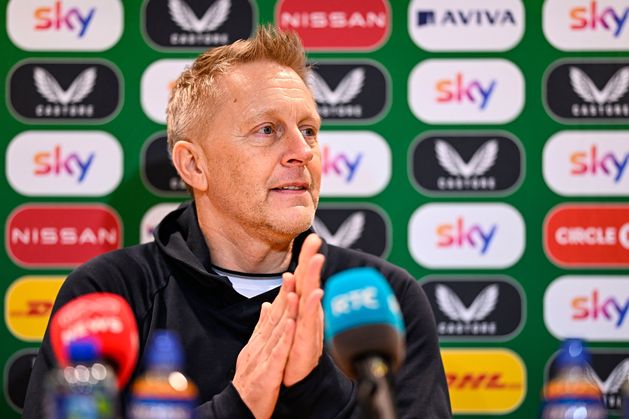Travel
How Northern Ireland is reclaiming its story
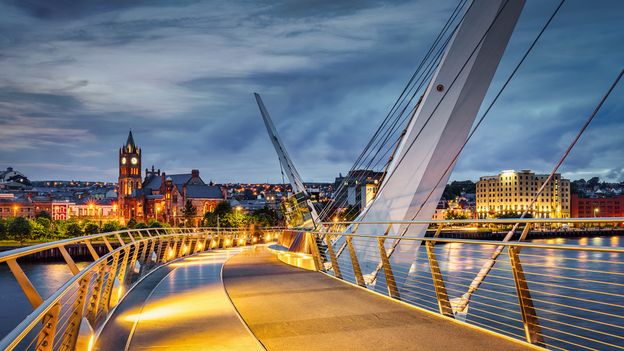
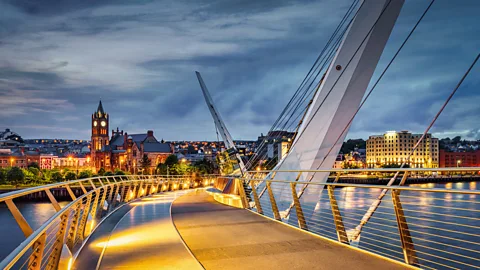 Getty Images
Getty ImagesThirty years ago, tourism to Northern Ireland was almost non-existent. Now, the country’s newfound sense of optimism is once again luring travellers to its shores.
It’s a sunny Saturday evening in Derry, Northern Ireland, and Ebrington Square on the northern banks of the River Foyle is buzzing. Tourists enjoy a drink on the terrace of the newly opened Ebrington Hotel & Spa. A busker draws a crowd outside the Embankment Bar & Grill and drinkers at the Walled City Brewery overflow onto the pavement.
It’s a familiar enough scene, but what makes this unusual is the location. During the Troubles – the decades-long clash between Protestant loyalists to the UK and Catholic nationalists who wanted to be reunited with the Republic of Ireland – that affected Northern Ireland from the late 1960s until the Good Friday Agreement of 1998, Derry was on the frontline of conflict.
Located right on the border with the Republic of Ireland, the city suffered attacks and bombings carried out by the Irish Republican Army (IRA) and clashes with the British army, brought in to keep the peace. Ebrington Square itself was home to the British army barracks, an impenetrable fortress looming over a divided city.
The conflict cast a long shadow over the nation, and 30 years ago, tourism in Northern Ireland was almost non-existent. As the Troubles began to ease after the IRA declared a ceasefire in August 1994, a few intrepid travellers arrived to visit the “sites” they’d seen on the news. Belfast’s now legendary Black Cab Tours give an indication of what these were: bomb sites, “peace walls” constructed to keep opposing sides apart and overtly political murals.
Now, however, peace has truly taken centre stage, and Ebrington Square is a visible symbol of the results. Reached by the S-shaped Peace Bridge that snakes its way across the river from the foot of the old walled city (the path to peace is never straight), the former no-go area is now the place to go.
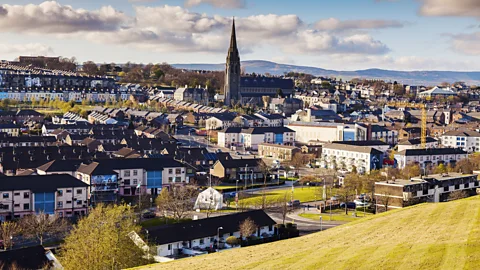 Getty Images
Getty ImagesAccording to Aeidin McCarter, Derry Council’s Investment and Enterprise Development officer, tourist numbers to Derry have doubled in the past 10 years, with visitors drawn by the city’s stunning location, fascinating history and burgeoning hospitality industry.
“Derry’s been transformed over the past 25 years, and last year was our biggest ever year for visitors,” says McCarter. “People are still interested in the history of The Troubles, but they come here because it’s a tourist destination like any other European city. Peace has brought about that transformation. There’s a thriving food and drink scene, bombed buildings have been restored and opened to the public and you can now walk the length of the once heavily guarded city walls.”
From the top of those 17th-Century walls, there are fine views in all directions: along the river to the sea, across the city to the surrounding mountains of Donegal and down to the area known as “the Bogside”. Built on land formed after the river silted up, this predominantly Catholic estate was at the epicentre of the Troubles. It was here on Bloody Sunday (30 January 1972) that British troops opened fire on civil rights protesters, killing 13 and injuring 14 others, one of whom later died.
Between 1969 and 1972, part of the Bogside was a self-declared autonomous Irish Nationalist area known as “Free Derry”. The Museum of Free Derry, which opened in 2007 in Bogside, tells the uneasy history of this period. And in July 2024, the much-anticipated Peacemakers Museum opened nearby, telling the next chapter in the Derry story: how the conflict escalated to virtual civil war before the gradual onset of peace.
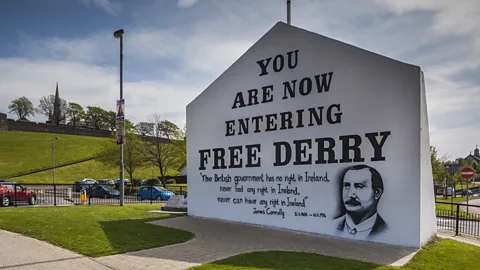 Getty Images
Getty Images“It’s divided into sections, which relate to key periods that form the backdrop to the Good Friday Agreement,” said project manager Michael Cooper. “As you walk around the museum, you move from Bloody Sunday to the present day and learn about the roles of local residents and politicians Martin McGuinness, Mitchel McLaughlin and John Hume in the peace process.”
John Hume, an Irish nationalist politician who worked tirelessly for a peaceful way forward, was awarded Nobel, Gandhi and Martin Luther King peace prizes for his efforts, the only person to receive all three awards, and visitors can see them displayed at the Guildhall Museum in the city centre.
Before the Good Friday Agreement, Derry/Londonderry, depending on which side of the political divide you sit (nationalists favour using the name Derry, and unionists Londonderry), was peppered with military checkpoints. Now, you can come and go freely but their legacy remains. Northern Ireland’s dramatic, littoral itinerary, the Causeway Coastal Route, begins just north of Belfast and stops in Derry; there’s then a gap of 30 miles before the Republic’s Wild Atlantic Way begins at Malin Head in County Donegal on the island’s northernmost tip.
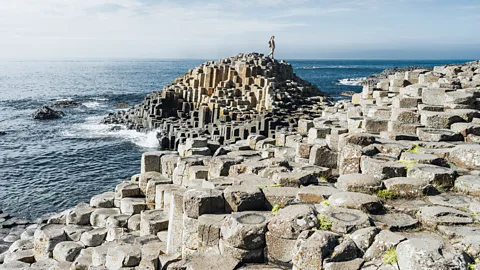 Getty Images
Getty ImagesIn 2020, the Irish Government launched a “Shared Island Initiative” to enhance cooperation between the two countries. One if its current projects is to link these two major coastal routes to create a continuous island driving route along the west coast, taking you through wild and rugged countryside dotted with enchanting villages and historic monuments.
Another initiative is the Narrow Water Bridge, a project that was officially launched in June 2024. Crossing sparkling Carlingford Lough at Warrenpoint, the site of one of the worst IRA bomb attacks in 1979, the bridge will join the two nations at the spot where President Joe Biden’s ancestors set sail across the Atlantic. Scheduled to open in 2027, the bridge will allow visitors easy access between the Republic and Northern Ireland on the east coast and bring them, in just an hour’s drive from Dublin or Belfast, to an area of spectacular natural beauty, taking in the Mourne and Cooley Mountains, the Ring of Gullion, thriving coastal resorts like Newcastle, and the Castlewellan Peace Maze. The latter’s 6,000 yew trees, planted in 1998 to mark the Good Friday agreement, are now fully grown.
“These projects are physical manifestations of the optimism that has grown since Good Friday,” said Tourism Ireland’s Helen McGorman. “[It’s] a shift in emphasis away from the Troubles to the amazing scenery, the incredible cities and the island’s much wider history.”
The biggest of those projects was the launch of Titanic Belfast, a museum dedicated to the world’s most famous cruise liner, housed in a behemoth of a building on the exact same spot in Belfast’s docks where the Titanic was built. Since its 2012 opening, it has attracted eight million visitors and brings £70-80m into the economy each year.
 Getty Images
Getty Images“Titanic Belfast was a project that came off the back of the Good Friday agreement,” said Judith Owens, the museum’s CEO. “Titanic was well-known and our job was to take that brand, bring it back to Northern Ireland and use that to catapult us into the global tourist industry.”
She added: “We get visitors from 142 different countries and once they are here they explore further afield, discovering our heritage and culture and a country with a very different identity to the one it had 30 years ago.”
Thirty years ago, visitors to Northern Ireland were mainly journalists and anyone taking photographs did so with the aim of making the front page. But Martin McCrossan, a forward-thinking Derry local in a mixed Catholic/Protestant marriage with a keen interest in local history was one of the first to make a bid for tourists.
“In 1994, my father decided he was going to set up a tour guiding business,” his daughter, Charlene, told me. Since her father passed away, she runs the company he founded, along with her mother and is one of its main guides, regularly taking visitors to the city walls, Derry’s two cathedrals and sites made famous by the hugely popular TV series, Derry Girls.
“At the time, everyone thought he was completely mad, but he wanted to show people there was more to the city than the Troubles. I remember him telling me that one day there would be peace and, in its wake, tourists.”
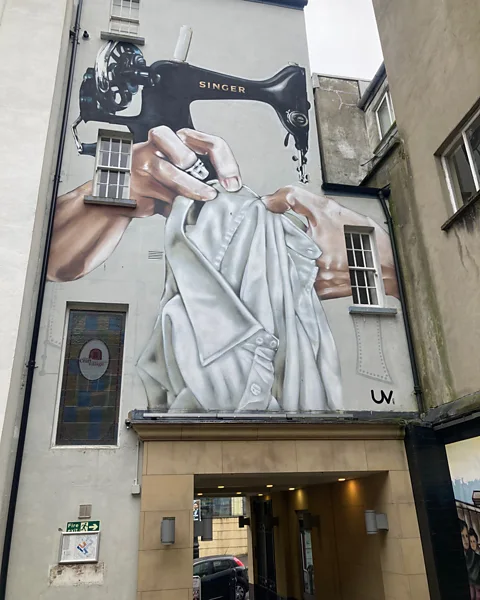 Lizzie Enfield
Lizzie EnfieldFor evidence of that, you need look no further than the queue forming outside the newly opened Stich and Weave restaurant in Ebrington Square. Housed in the former army canteen, its name is a nod to the city’s shirt-making history (at the turn of the last century, 80% of shirts worn in the British Empire were made in Derry). Behind the restaurant, on the edge of the square beside the water, work is underway on the new DNA (Derry North Atlantic) maritime museum, which will chart the city’s history, illustrating how its position as the UK’s westernmost port is woven into its DNA. Due to open in 2026, it will be the latest in a series of new visitor attractions that have sprung up since the Good Friday Agreement, and another symbol of the country’s optimism.
One of Northern Ireland’s greatest storytellers was Belfast-born CS Lewis, who drew inspiration for Narnia from the snow-covered Mourne Mountains in Northern Ireland’s south-eastern corner. On the gable of a building in Rostrevor, a charming Victorian town at the foot of those mountains, someone has painted an oft-cited Lewis quotation, one that unwittingly sums up the new Northern Irish ethos and the impact it has had on tourism: “You can’t go back and change the beginning but you can start where you are and change the ending.”





